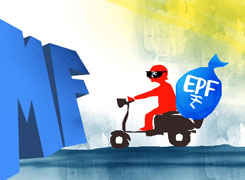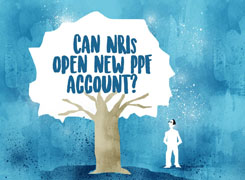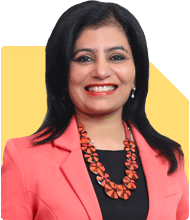PF Withdrawal: Claiming Pension After 8.7 Months?
Nitin Narkhede |93 Answers |Ask -Follow
MF, PF Expert - Answered on Jan 16, 2025
As a mentor, Nitin has trained over 1,000 individuals, many of whom have seen remarkable financial transformations.
Nitin holds various certifications including the Association Of Mutual Funds in India (AMFI), the Insurance Regulatory and Development Authority and accreditations from several insurance and mutual fund aggregators.
He is a mechanical engineer from the J T Mahajan College, Jalgaon, with 34 years of experience of working with MNCs like Skoda Auto India, Volkswagen India and ThyssenKrupp Electrical Steel India.... more

Dear sir, I have completed 8.7months and withdrawn the PF amount. But I have received the certificate from pension authority. Can I get the pension by submitting the certificate at EPFO office or I have to withdraw the money. What to do. Please guide
For eligibility under the Employees' Pension Scheme (EPS), the minimum service requirement is 10 years of service. Unfortunately, with 8 years and 7 months of service, you do not meet the minimum 10-year requirement to be eligible for a monthly pension.
if you have withdrawn the PF amount, check whether your previous employment details were also included, if yes, then you may be eligible for EPS as your services cross 10 years. in that case, you can submit the request for eps pension.
Regards, Nitin Narkhede Founder Prosperity Lifestyle Hub, Free webinar https://bit.ly/PLH-Webinar
You may like to see similar questions and answers below
Ramalingam Kalirajan |9758 Answers |Ask -Follow
Mutual Funds, Financial Planning Expert - Answered on Apr 23, 2024
Milind Vadjikar | Answer |Ask -Follow
Insurance, Stocks, MF, PF Expert - Answered on Nov 21, 2024
Milind Vadjikar | Answer |Ask -Follow
Insurance, Stocks, MF, PF Expert - Answered on Dec 13, 2024
Nitin Narkhede |93 Answers |Ask -Follow
MF, PF Expert - Answered on Jan 16, 2025
T S Khurana |492 Answers |Ask -Follow
Tax Expert - Answered on Mar 19, 2025
Sunil Lala |214 Answers |Ask -Follow
Financial Planner - Answered on Jul 17, 2025
Sunil Lala |214 Answers |Ask -Follow
Financial Planner - Answered on Jul 17, 2025
Archana Deshpande |117 Answers |Ask -Follow
Image Coach, Soft Skills Trainer - Answered on Jul 17, 2025
Dr Nagarajan J S K |1829 Answers |Ask -Follow
NEET, Medical, Pharmacy Careers - Answered on Jul 17, 2025
Dr Nagarajan J S K |1829 Answers |Ask -Follow
NEET, Medical, Pharmacy Careers - Answered on Jul 17, 2025
Dr Nagarajan J S K |1829 Answers |Ask -Follow
NEET, Medical, Pharmacy Careers - Answered on Jul 17, 2025
Dr Nagarajan J S K |1829 Answers |Ask -Follow
NEET, Medical, Pharmacy Careers - Answered on Jul 17, 2025
Dr Nagarajan J S K |1829 Answers |Ask -Follow
NEET, Medical, Pharmacy Careers - Answered on Jul 16, 2025
Dr Dipankar Dutta |1755 Answers |Ask -Follow
Tech Careers and Skill Development Expert - Answered on Jul 16, 2025
Nayagam P P |8925 Answers |Ask -Follow
Career Counsellor - Answered on Jul 16, 2025

























